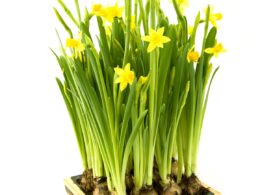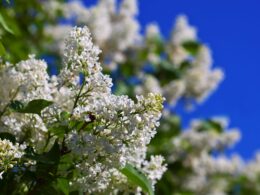When to Plant Daylilies in the Ground – Basic Rules
There is no one answer to the question of when to plant daylilies. They’re a tough and versatile plant that can adapt to a wide range of growing conditions. Also, they’re easily propagated from division, so they can be divided and replanted about any time of year, from spring through fall.
However, many gardeners prefer to wait until the plants are dormant in the early fall (about six weeks before the first frost) or plant them as soon as the ground is workable in the spring. This will give the daylilies a chance to establish themselves before the heat of summer sets in.
Additionally, late fall and early spring are typically wetter times of year, which helps to ensure that the plants will have enough water to get established. These flowers don’t need a lot, though, and can survive in less-than-ideal conditions. Pests are rarely seen on them. With a little care and attention, daylilies will provide years of beautiful blooms.
Choosing a Planting Site for Your Daylilies
Since you already know when to plant daylilies, you can start making your plans. When choosing a site for planting, there are a few things to keep in mind.
- First, daylilies prefer full sun, so choose a spot that gets at least six hours of direct sunlight per day.
- Second, the soil should be well-drained. Avoid planting daylilies in an area that is prone to flooding or standing water.
- Third, consider the mature size of the daylily when selecting a site; you will need to allow enough room for the plant to spread out.
- Don’t plant them near trees or shrubs, as the roots of these plants will compete with the daylilies for water and nutrients.
- Finally, make sure the site is accessible so that you can easily water and fertilize the plants – although they only need a yearly addition of compost.
By following these guidelines, you can choose a site that will provide the ideal conditions for your daylilies to thrive.
How to Plant Daylilies – The Depth and Distance Between Seeds
Now that you know where and when to plant daylilies, it’s time to get started. The depth at which you plant them is important. They should be planted with their crown about one inch below the surface of the soil. The crown is a small white core between the roots and the foliage, above which a leafless scape grows and flowers.
As for the distance between plants, give them about 18 to 24 inches of space so that they have room to spread out. This way, the clump will stay intact for 10-15 years. The exact amount of space they need will depend on the variety. For example, miniature daylilies need about 12 inches of space, while large varieties require up to 36 inches.
After planting, water the area well and mulch around the plants to help retain moisture and minimize weeding. Daylilies are tough, adaptable plants, but they need a little time to get established. When they’re fully grown, they don’t require fertilizer.
When to Plant Daylilies in Pots?
Daylilies can also be planted in pots. The best time to do this is early spring, as the plants will need a chance to establish themselves before the hot summer months. They’ll thrive in just about any type of soil. However, it’s important to choose a pot that is large enough to accommodate the roots of the plant. Daylilies have deep roots, so a small pot won’t be sufficient.
When to Plant Daylilies in the UK?
Daylilies (hemerocallis) are a popular choice for gardeners in the UK, thanks to their hardiness and ease of care. When to plant daylilies for the best results? Almost any time of year will do, although April is generally the best time to plant them. This is because the soil is softer and easier to work with, and there is more moisture in the air. However, growing daylilies in late summer or September is also possible, as long as they’re given enough water to help them get established.
When Do Daylilies Bloom?
One of the best things about daylilies is that their bloom time is so long. In general, they will start blooming in late June and continue until August or September. However, this can vary depending on the variety and the climate. For example, daylilies in colder climates may not start blooming until July.
Will Daylilies Bloom in the First Year?
Daylilies are perennial plants, but they aren’t typically grown from their seeds. It’s possible for them to bloom in the first year if you’re dividing established plants. If they’re young, it’s more likely that they will bloom in the second or third year. This is because they need time to develop a strong root system.
Choose from the Many Varieties of Daylilies
Daylilies come in a wide range of colors, sizes, and shapes. Some are hardy enough to be evergreen, while others are only semi-evergreen or dormant. Some of the most popular varieties are:
- ‘Stella De Oro,’ which is a yellow flower with an orange center;
- ‘Ruby Spider,’ which features deep red petals with a yellow center;
- ‘Tavares Blue Moon,’ a purple flower with a washed center.
No matter what your personal preferences are, there is sure to be a daylily variety that you’ll love. The growing season may vary slightly between them, so do your research before picking a flower for your garden.
Daylilies Are Tough and Beautiful – Enjoy the Show!
Now that you know when to plant daylilies, it’s time to get started! These easy-care flowers are a great addition to any garden, and with a little planning, you can enjoy their beauty for years to come. Thanks for reading, and happy gardening!



















